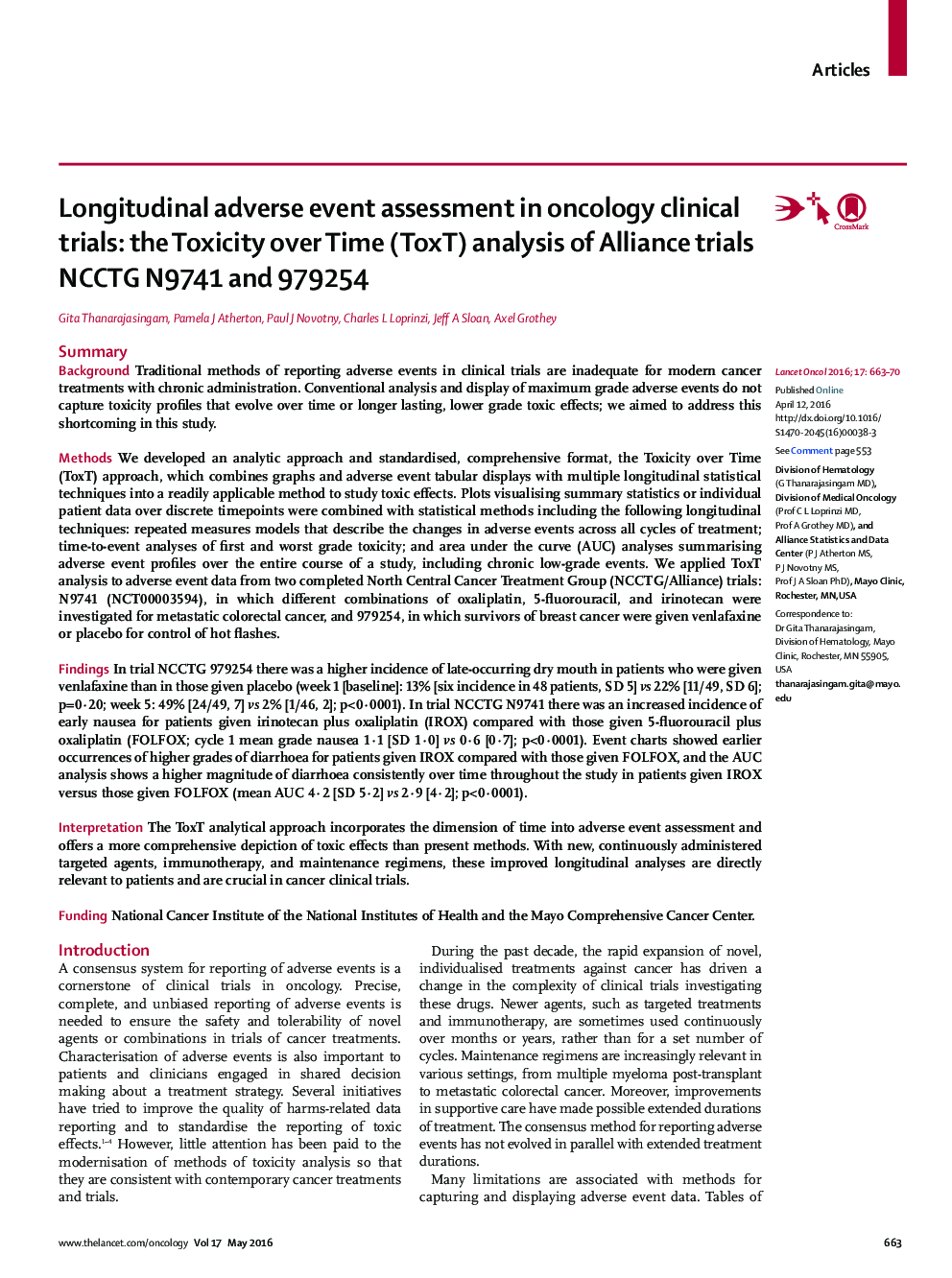| Article ID | Journal | Published Year | Pages | File Type |
|---|---|---|---|---|
| 3993225 | The Lancet Oncology | 2016 | 8 Pages |
SummaryBackgroundTraditional methods of reporting adverse events in clinical trials are inadequate for modern cancer treatments with chronic administration. Conventional analysis and display of maximum grade adverse events do not capture toxicity profiles that evolve over time or longer lasting, lower grade toxic effects; we aimed to address this shortcoming in this study.MethodsWe developed an analytic approach and standardised, comprehensive format, the Toxicity over Time (ToxT) approach, which combines graphs and adverse event tabular displays with multiple longitudinal statistical techniques into a readily applicable method to study toxic effects. Plots visualising summary statistics or individual patient data over discrete timepoints were combined with statistical methods including the following longitudinal techniques: repeated measures models that describe the changes in adverse events across all cycles of treatment; time-to-event analyses of first and worst grade toxicity; and area under the curve (AUC) analyses summarising adverse event profiles over the entire course of a study, including chronic low-grade events. We applied ToxT analysis to adverse event data from two completed North Central Cancer Treatment Group (NCCTG/Alliance) trials: N9741 (NCT00003594), in which different combinations of oxaliplatin, 5-fluorouracil, and irinotecan were investigated for metastatic colorectal cancer, and 979254, in which survivors of breast cancer were given venlafaxine or placebo for control of hot flashes.FindingsIn trial NCCTG 979254 there was a higher incidence of late-occurring dry mouth in patients who were given venlafaxine than in those given placebo (week 1 [baseline]: 13% [six incidence in 48 patients, SD 5] vs 22% [11/49, SD 6]; p=0·20; week 5: 49% [24/49, 7] vs 2% [1/46, 2]; p<0·0001). In trial NCCTG N9741 there was an increased incidence of early nausea for patients given irinotecan plus oxaliplatin (IROX) compared with those given 5-fluorouracil plus oxaliplatin (FOLFOX; cycle 1 mean grade nausea 1·1 [SD 1·0] vs 0·6 [0·7]; p<0·0001). Event charts showed earlier occurrences of higher grades of diarrhoea for patients given IROX compared with those given FOLFOX, and the AUC analysis shows a higher magnitude of diarrhoea consistently over time throughout the study in patients given IROX versus those given FOLFOX (mean AUC 4·2 [SD 5·2] vs 2·9 [4·2]; p<0·0001).InterpretationThe ToxT analytical approach incorporates the dimension of time into adverse event assessment and offers a more comprehensive depiction of toxic effects than present methods. With new, continuously administered targeted agents, immunotherapy, and maintenance regimens, these improved longitudinal analyses are directly relevant to patients and are crucial in cancer clinical trials.FundingNational Cancer Institute of the National Institutes of Health and the Mayo Comprehensive Cancer Center.
